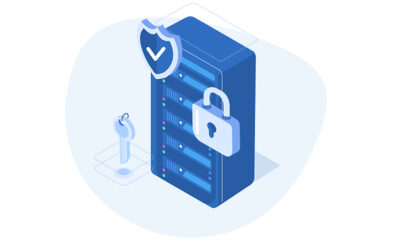Not too expensive, but also not too cheap… Perfect participant pricing for B2B events is very hard to find. Digitalization is another point as well. Which models are there at all?
The equation is, in principle, simple:
Number of paying guests x average ticket price = total turnover
In addition to this is ideally income from sponsoring (here are our tips regarding this point) and exhibition. And that’s that. Unfortunately, it naturally isn’t as easy as that! Determining the perfect participant pricing structure is a science in its own right.
Particularly for new events, prices can be very off – and such errors are very hard to correct in subsequent years. Digitalization enables people to compare prices of different events with very little effort, at the click of a button.
New options are opening up – several of which we’ll have a closer look at now from an event organizer’s perspective.
The Classic
What doesn’t cost anything isn’t worth it! This is an old principle that can still often be valid. This is the reason why two days at the German Trade Congress (German: Deutscher Handelskongress) in Berlin can cost you 1,490 EUR plus VAT. But costs can be a lot higher.
Participants of the World Economic Forums in Davos pay first an annual membership fee and then roughly around 29,000 EUR (per person!) to rub shoulders with the likes of Leonardo di Caprio, David Cameron, Christine Lagard, Sheryl Sandberg, Matt Damon, Joe Biden and many more.
Diverse Super Early-, Early-, Crazy-, Regular-, Late-, Late Late-Bird options, 2-for-1 and a range of discount models causing deviations at any B2B event. The MoneyConf in Dublin, participants pay e.g. 495 EUR for Super Early Bird, and 1,995 EUR for Late Late Bird.
Free Entry!
Many B2B trade fairs have in the meantime gone for not charging for entry at all – providing participants register in advance. Those who don’t, pay.
All others also pay indirectly, as event organizers obviously want to earn revenue on registered visitor data. Google, Facebook etc. don’t do it any differently. Obviously, such a model only works when revenue flow can be generated 100% from sponsoring, exhibition and advertising income. This requires the event organizer to have established a respectively sustainable business model.
Pay what you want (PWYW)
Radiohead led the way with this almost exactly 10 years ago. Fans could download their album “In Rainbows” directly from their website and pay what they wanted to. It was an absolute success for the band: they not only received worldwide attention, but also a higher average revenue per album in comparison to conventional sales channels!
Trade fairs have also already gone down this road. The Lehmbruck museum in Duisburg hosts a guided tour with art historians once per month. Visitors determine the price themselves.
So, is this also an option for B2B events? I think that many managing directors and CFOs of conference and trade fairs could be breaking into a sweat…
Freemium
A popular model in the online world: a service is first offered free of charge to reach a critical user mass. Then come the additional costs. At a trade fair, entry for example could be free of charge, the participation in the rest of the program however has to be paid for, as well as access to the networking lounge, evening events etc.
This is all good, as long as pricing doesn’t get too complicated. If no one understands it, no one will buy it.

That’s another way of doing it…
Matchmaking-based pricing
A lot of our customers take the approach that the participation in an event includes a particular number of arranged 1 to 1 meetings. They count consequently on business matchmaking. Suppliers at the Multifamily Exchange Event in New Orleans pay for 16 meetings, e.g. 8,500 USD, each additional meeting costs 400 USD. This is a valid model for the real estate industry, as suppliers know in advance who they are expecting and how much these contacts are worth to them.
Invitation-only and hosted buyer concepts
It’s not a big leap from the previous model to hosted buyer concepts. Participants apply for slots. If they match a particular profile, the event organizer frequently assumes all costs for travel, accommodation and board. The one condition is that participants commit to completing a certain amount of supplier appointments.
We have dealt with hosted buyer concepts and their pitfalls already.
Online price – offline price
In an age when live-streaming is ever more affordable and hybrid online and offline events are popping up all over the place, online participation in events suggests itself to complement offline tickets. Video recordings and slides are often streamed together, which can be viewed on purchase of a pass (example: Social Media Conference New Zealand, stream access costs 100 Dollars).
Bottom line
Digitalization is turning the events industry upside down. This doesn’t stop when it comes to pricing models. The value that participants connect with the event is totally in focus. The Converve platform counts on business matchmaking, something that is gaining ever more importance for event participants. This will enable pricing models in the future that are directly linked to the event experience of the participants.



